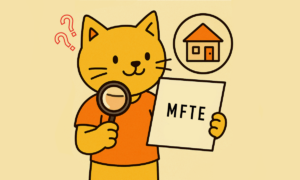Transferring to a 4-year institution comes with a slew of benefits. Increased job opportunities, specialized career preparation, more majors to choose from, and greater networking opportunities are just a few to name. Many community college students will face the eventual decision of whether or not to transfer to a 4-year institution. Here at Seattle Central, 37% of all students transfer to 4-year schools.
It’s a daunting process, one rife with opportunities for self-sabotage and doubt — but it doesn’t have to be. With the proper tools and preparation, the application and personal statement can be more exciting than not.
Professor Helena Ribeiro of Seattle Central College, who has taken a keen interest in helping her students ease into this process with confidence, has many helpful tips to offer to prospective transfer candidates. On top of compiling an impressively detailed guide that is available through the Seattle Central library, she talks at length about the ins and outs of the more important steps of the application process, which all begin with timing.
“Find out when applications are due at what schools, and begin several months before that date,” Ribeiro said. “The fall quarter before applications is a good time to start doing research, figuring out what materials you will need, and how and when to submit them. In this time, too, you can begin the ‘panic draft’ of your personal statement.” The draft which, in this case, is where a student can get out all their thoughts and concerns and anxieties, and from there, and over several iterations, mold it into something that highlights the best parts of themselves.
“You’re selling a character,” she continued. “You’re writing from the point of view of the student who gets into the university, the one who shines and excels, even if you don’t feel that way. Many students are not socialized to talk about their successes. But that middle part of their personal statement, the one where they talk about how much they’ve ‘killed it’, regardless of their past missteps or failures, perceived or otherwise, is incredibly important. You’re saying ‘look at me now.’ You’re writing your success story.’”
Many students believe that poor grades or experiences in their past mean less of a chance at transferring, despite how well they’re doing now. But Ribeiro says this is a common misconception. “I had failed out of multiple colleges multiple times, and the personal statement had to tell the story of how I went from abject failure to pretty good at English,” she says. “Get your eyes on other personal statements — many, if you can — from friends who have gotten into schools [or guides such as her own], and see what they have in common, see the formula, what’s the same, what’s different. Get a sense of the narrative.”
And from there, that formula is the key to the story. It is what will guide a reviewing committee into seeing the best version of the student on paper, and understanding what needs to be understood. “Check a lot of boxes, too, as far as race, ethnicity, experience, and more go. If you think your position is important to your story, say it out loud in your first paragraph. Write about why these checked boxes have worked for or against you, and how they impact or inform your story. What’s obvious to you might not be obvious to them.”
And don’t lose sight of important accomplishments in the process. Many students tend to sell themselves short, forgetting about things such as their time on the Dean’s or President’s lists, extra credits they’ve taken, Honors Societies, or exciting projects they’ve worked on.
Outside of the personal statement and initial preparation, there are a number of other steps that a student can take to ensure they are covering all of their bases. Ribeiro emphasizes the importance of looking into all options: “If you are in any way eligible for TRIO, join TRIO. Not only will they provide you with additional academic support, help you with personal statements/CV’s/applications, but, as a member of TRIO, you can also waive application and matriculation/registration fees, which will literally save you hundreds or thousands of dollars.”
Finances, too, are something to be thinking about and planning ahead of time. “As soon as W-2 forms [for income tax returns] are mailed out [usually the first two weeks of January], fill out your FAFSA or WASFA, and make sure you have it sent to every school you’re planning on applying to. Your financial aid package will not be calculated without it. Do not put this off! … Acceptances usually arrive before the financial aid package, which tells you how much of your tuition will be covered by grants and scholarships [and loans]. ‘Merit’ scholarships are based on your academic record, whereas ‘need-based’ aid is based on your finances. Usually, merit scholarships tied to your GPA will be included with your admissions package, but not ‘need-based’ aid, which is calculated based on your FAFSA or WASFA, and might take a little longer to calculate and award.”
The transfer process does not need to be as intimidating as many students make it out to be. With the proper time management, organization, and tools, anyone can step into their applications with the confidence in knowing that they’ve checked all the right boxes, and are approaching it as the person they want their future institution to know. They’ve done all the work, and now they get to showcase that.
Author

Sarah is the Arts & Culture Editor and a writer for the Seattle Collegian, as well as a student of Seattle Central College, and intends to pursue her MFA in Creative Writing once finished with her BA. She has a deep fascination, bordering on obsession, with all the many things that make us human and the conditions and complexities therein, and tends to lean into these in her writing. When not buried in text or staring at the blinding light of a word processor, Sarah is enjoying films, books, and video games, as well as exploring the beauty that Washington has to offer.

















Be First to Comment